Horizon Hobby Blade 330X RTF
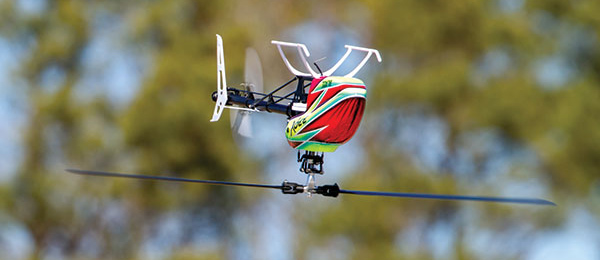
Written by Greg Gimlick A convenient and capable aerobatic helicopter Product Review As seen in the April 2018 issue of Model Aviation.
Bonus Video
Specifications
Model type: Electric RTF flybarless helicopter Skill level: Intermediate to advanced Main rotor diameter: 28.5 inches Main rotor blade length: 12.8 inches Head geometry: 120° (program as “normal”) Head type: Collective pitch (CCPM) flybarless Tail rotor diameter: 6.1 inches Tail drive: Belt Size: 450 Length: 34.3 inches Height: 8.8 inches Flying weight: 27.3 ounces Power system: E-flite 440H 4,200 Kv brushless outrunner ESC: Blade 45-amp with SBEC heli ESC Flight battery: E-flite 11.1-volt 2,200 mAh 3S 30C LiPo Flight duration: 4 to 6 minutes (depending on type of flying) Price: $479.99 Radio (included): Spektrum DXe transmitter; Spektrum AR636A receiver; Spektrum H3050 sub-micro digital heli MG swash servos; Spektrum H3060 sub-micro digital heli MG tail servoPluses
• Fully assembled. • Beautiful fiberglass canopy. • Quality servos. • Uses standard 3S 2,200 mAh battery pack. • Carbon-fiber main blades. • Telemetry-based text generator. • Excellent, preprogrammed FBL system.Minuses
• Bailout feature would have been nice. • No DFC head.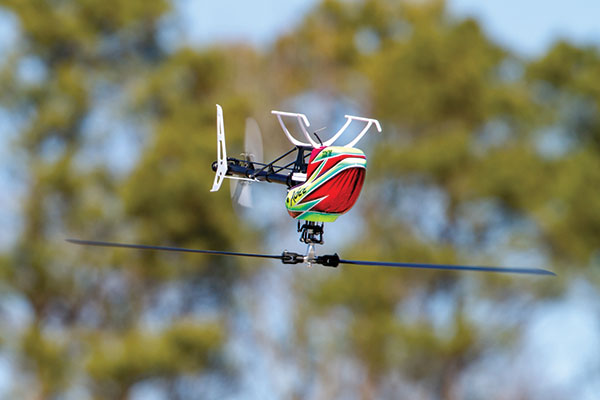
The Blade 330X is an aerobatic-capable heli that will allow you to push your skills.
Product Review
I opened the Horizon Hobby Blade 330X RTF box and was struck by the aircraft’s gorgeous canopy. The fiberglass work and paint on this thing is gorgeous. I pulled it out and looked at the overall quality of the helicopter and I couldn’t wait to get started. I’ve spent a lot of time lately flying micro and small helis, so suddenly the 330X (450 size) seemed like a return to my “big” machines. The carbon-fiber blades are mounted and firmly secured with a foam keeper on the tailboom. I’ve gotten used to seeing direct flight control (DFC) heads lately, so it caught my eye that this employs the standard driven head control. No biggie, but it was a change from some recent Blade offerings. The other change is the Spektrum AR636A receiver that replaces the Spektrum AR7200BX that was used in some of the previous Blade designs.Assembly
The 330X comes out of the box ready to fly, so there isn’t any assembly to be done. Put your battery on the charger so that by the time you’ve read the manual, it will be ready. My 330X is the RTF version that comes with a Spektrum DXe transmitter, but if you bought the BNF aircraft, you can use this time to program your radio.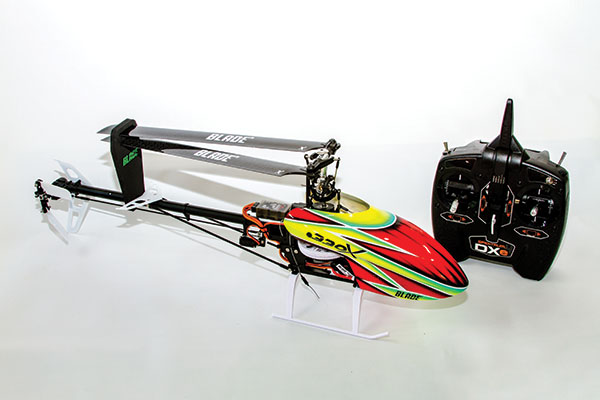
The aircraft’s quality is outstanding and includes everything needed to fly. The colorful canopy stands out well on the bench or in the air.
I have a DX9 radio and set it up so that I could try both. The manual is the typical Blade offering that covers all of the programming requirements for the company’s various radios. Programming notes: If you bought the RTF version with the DXe transmitter and you want to tweak any settings, you’ll need to get a transmitter/receiver USB Interface (SPMA3065) cable to connect to your laptop. There is also a transmitter/receiver programming cable called the Audio Interface (SPMA3081), if you’d rather do the programming through a smartphone app. If you’re using an updated Spektrum transmitter capable of accepting telemetry-based text, you can tweak the proportional control device (PID) through that. These advanced settings should only be attempted by experienced people. The technical staff at Horizon Hobby suggest that you have at least 20 flights on the aircraft before attempting to adjust PIDs to allow everything to get broken in. Take some time to look over the heli while your batteries are charging. This is a good time to familiarize yourself with the layout and look for any possible maintenance items that should be addressed before the first flight. Check the screws for security. Look at the wiring to ensure that nothing can come in contact with the moving parts. I found that mine was extremely well done, with everything channeled beautifully and secured.
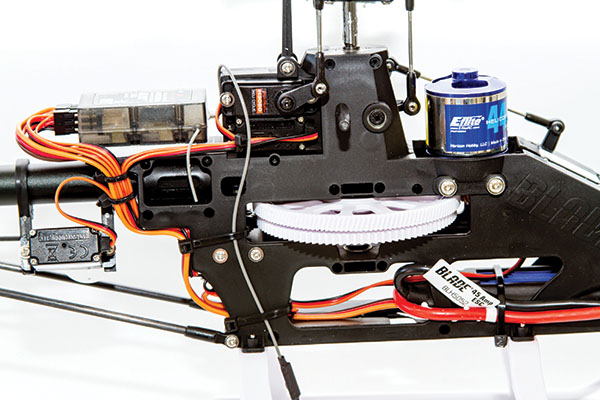
Neatness counts and Blade carefully routed all of the wires, antennas, etc. and secured them. You can see how accessible everything is if maintenance is required.
During your visual tour, you’ll also notice that this helicopter employs a driven tail that provides positive tail rotor control throughout the flight regime, including autorotations.
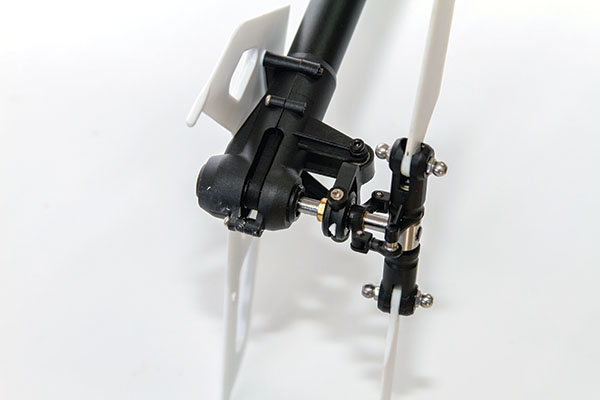
The belt-driven tail rotor is easy to maintain or adjust.

The flybarless (FBL) head is a standard-driven design and is set up perfectly upon arrival.
I removed the blades and checked them for balance, finding them to be good. While they were off, I attached a battery and checked all of the flight controls for proper movement. This also allowed me to confirm that my Hold function worked properly. The 330X ESC utilizes a governor mode. If you’re new to governors, this is why the throttle curves might look different than what you’re used to. Be sure to program your radio to match the settings in the manual if you didn’t use the DXe that came with the RTF version.
Flying
Sooner or later you’ve got to quit looking things over and see what the 330X will do. I’m an intermediate pilot, but not a 3D monster, so for that end of things, I had my club mate, Daniel Lamb, wring it out. I was comfortable in Normal and Stunt Mode 1, but Stunt Mode 2 was sporty for me. I’ll stick with the first two modes for a while. Daniel didn’t waste any time getting into Stunt Mode 2 and going full-blown 3D crazy! I loved watching my helicopter do things I wish I could do. If you’re not comfortable flying a machine without a bailout feature, it might be prudent to have a more experienced pilot do the initial test flight. Nothing needed to be tweaked on mine and there were no surprises. For my flying style, I found all of the factory-set parameters to be more than sufficient. For Daniel’s 3D work and his more finely tuned awareness of the feel of the machine, there were a couple of things he would have prefered tuned to his liking. What this heli provides is very solid initial programming that does everything quite well. If you are an advanced pilot, it provides a great base from which to begin tweaking. There is more than enough power to do any maneuver you can think of and the tail held well throughout the routines. The climb is monstrously strong for the 65% governed motor. The stock E-flite 3S 2,200 mAh battery packs did a good job of keeping up with the demands. My flights go slightly longer because I’m not demanding as much from the battery as Daniel does while doing 3D, but duration for both is more than adequate. I didn’t encounter any tail wag during my flights, but Daniel sensed a little with his higher demands on the system. After we get in a few more flights, we’ll dial those in slightly. By the way, if you go looking for the tail rotor gain settings, it’s under the gear section of your DXe programming. One thing that stood out after flying my other helicopters that are this size is that the head speed is significantly lower. I like the lower head speeds that some of the newer helis are using. In Stunt Mode 2, the 65% throttle curve will give you approximately 2,000 rpm. During a couple of extreme maneuvers, Daniel felt that the motor was bogging slightly and he would like to dial this up a bit. Whether the motor was bogging down or the batteries sagging remains to be determined. I think Daniel was slightly hesitant when he first checked out the heli to see if it would stand up to his maneuvers, but by the end of a few flights, he commented, “I think this will do anything you want it to.” The photos and video proved him right.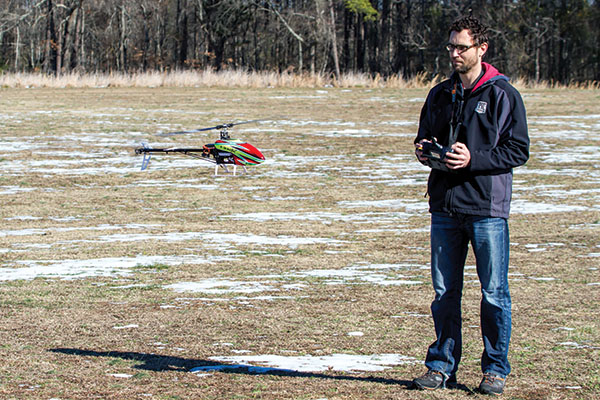










4 comments
Blade 330x
330S
Not A Beginner Or Training Machine
330S RTF
Add new comment